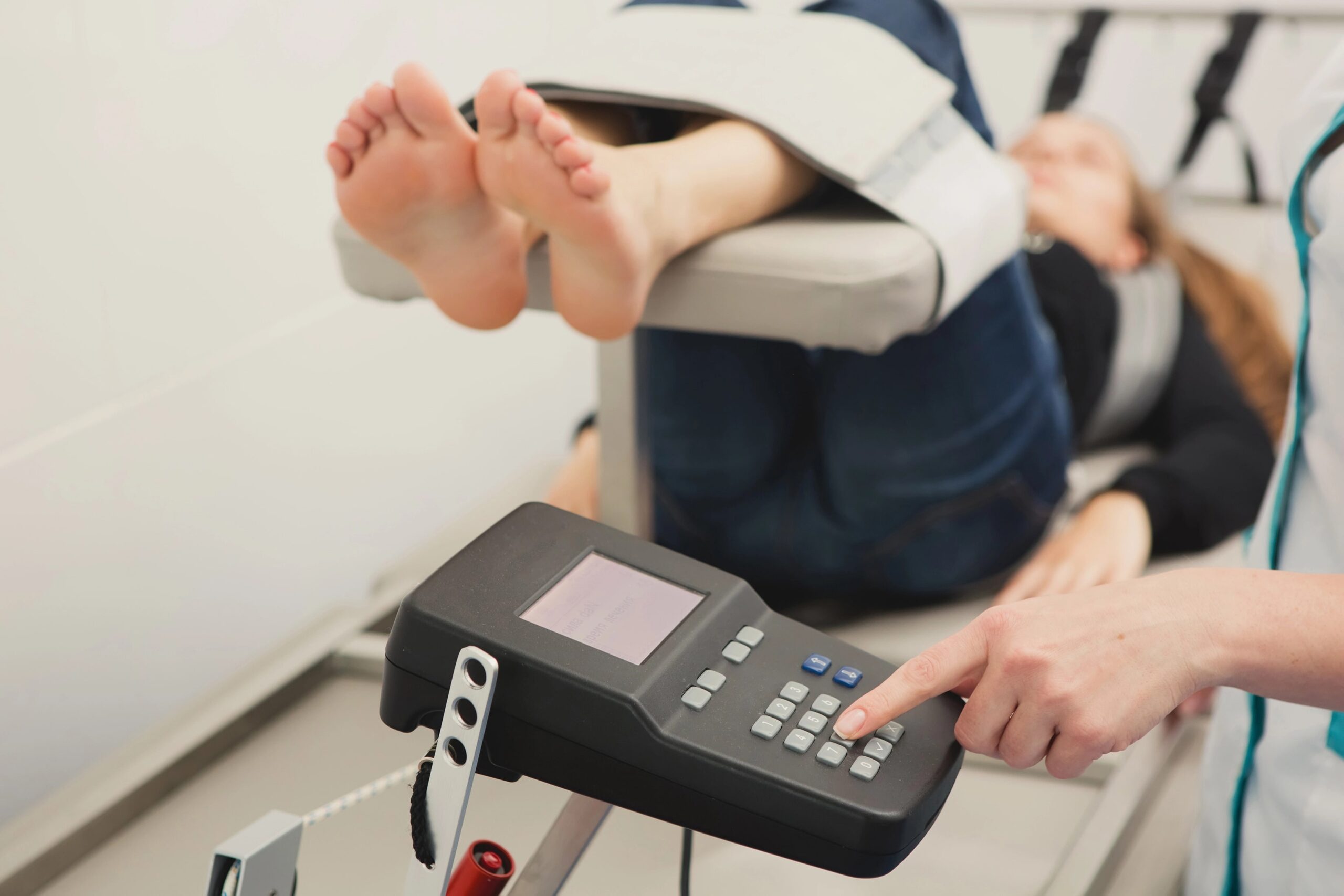Spinal decompression therapy has become an increasingly popular option for individuals seeking relief from chronic neck and back pain. This non-invasive treatment method targets the spine with precision, gently stretching it to reduce pressure on discs and nerves and promote healing. Whether you’re dealing with a herniated disc or sciatica, you might be interested in the benefits of spinal decompression, which include pain reduction, improved mobility, and minimal recovery time. Scroll down to learn more.
What Are the Benefits of Spinal Decompression?
Spinal decompression is a non-invasive, non-surgical treatment for many different forms of chronic neck and back pain, particularly pain caused by disc problems and related spinal conditions. Spinal decompression therapy uses a specialized table to mechanically stretch the spine to relieve pressure on discs and nerves.
The benefits of spinal decompression include the following:
- Pain Reduction: Many patients report a significant decrease in pain after completing their recommended course of therapy.
- Improved Mobility: Because this treatment reduces pressure on nerves and discs, patients frequently find they can move more freely and comfortably.
- Non-Invasive and Safe: Very few risks are associated with spinal decompression therapy, and it is significantly less invasive than surgical options. Side effects, like temporary soreness in the affected area and muscle spasms, are typically mild and brief.
- Minimal Recovery Time: Because the process is non-surgical and side effects are minimal, patients can often resume their daily activities relatively quickly.
Conditions Treated by Spinal Decompression
The benefits of spinal decompression — like reduced pain and improved mobility — may sound appealing to anyone who suffers from chronic neck or back pain. However, whether or not spinal decompression will be an effective treatment for you depends on the source and the severity of your neck or back pain. Spinal decompression is most commonly recommended for specific health conditions that contribute to back pain, such as the following:
- Bulging or slipped discs
- Degenerative disc diseases
- Sciatica
- Facet joint syndrome
- Spinal cord injuries or diseases causing radiculopathy (spinal nerve root pain)
- Pinched nerves
- Spinal stenosis
How Spinal Decompression Works
During spinal decompression therapy, the medical provider uses a specialized table to mechanically apply precise, varying levels of tension that help the spine lengthen and release. This targeted, gentle mechanical stretching process allows herniated or bulging discs to retract, decreasing pressure on spinal nerve roots, alleviating pain, and opening the area to promote the flow of oxygen, water, and other nutrients into the discs to aid the healing process.
Spinal Decompression vs. Traction
Spinal decompression and traction both use stretching to alleviate spinal pressure and reduce back pain. However, standard traction therapy is much less targeted than spinal decompression. In standard traction therapy, a steady, consistent force is manually applied to elongate the spine, pulling along the entire spinal section being treated. The process requires a large poundage of pull, which can cause pain and muscle spasms.
Spinal decompression, on the other hand, uses computer-modulated equipment and imaging to provide targeted and precise relief, making it a more effective solution for specific spinal conditions. By using advanced computer technology to adjust the angle and force of the stretch, spinal decompression can target specific vertebral levels, rehydrating discs and easing spinal stenosis. Additionally, because it targets specific vertebral levels, your provider can use less poundage, ensuring a safer, more controlled treatment that won’t cause muscle spasms.
Safety and Effectiveness
Current research supports the potential of spinal decompression therapy for safe, effective pain management. Multiple studies have found that it can notably decrease pain and even reduce the volume of herniated discs over time. Many patients report significant pain relief after several sessions, which supports its role as an adjunct to conservative treatment strategies.
However, it’s important to note that while spinal decompression can offer significant relief for many, it is not a universal solution. The therapy’s effectiveness depends on various factors, including the nature and severity of the spinal condition. Individuals with spinal fractures, severe osteoporosis, or other contraindicating conditions may not be suitable candidates.
Several different tests can help determine if decompression therapy is right for you, including bone scans, electrical tests, x-rays, and MRIs.
Are you interested in learning more about spinal decompression? If you live in the Springfield, Missouri, area, reach out to C.O.R.A.MED HRT & Regeneration Center. Our dedicated care team is committed to providing personalized, accessible, and integrated care, focusing on the root causes of health issues and employing advanced medical technology. No referral is required, and C.O.R.A.MED will create a custom care plan tailored to your unique needs. To learn more, please give us a call at 417-207-2441 or send us a message online.


